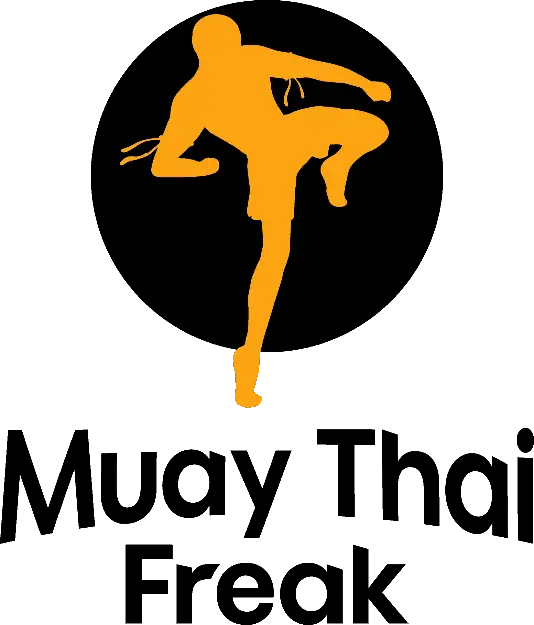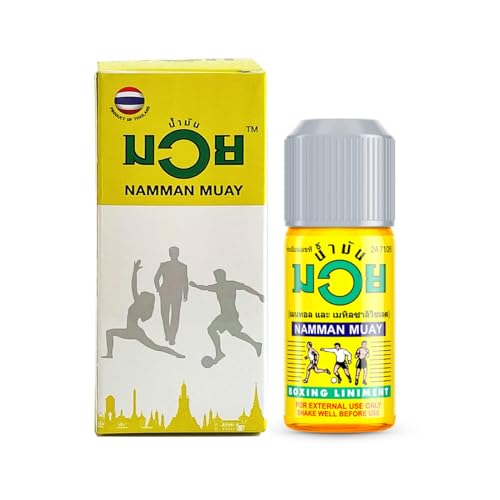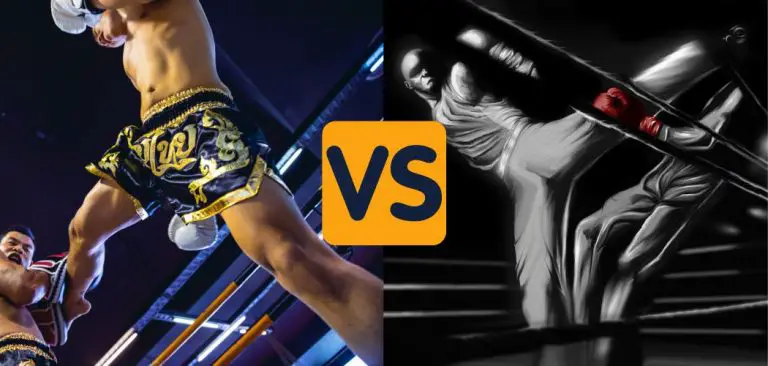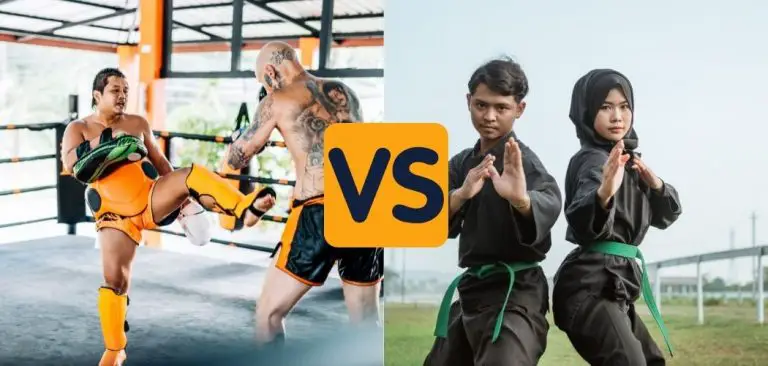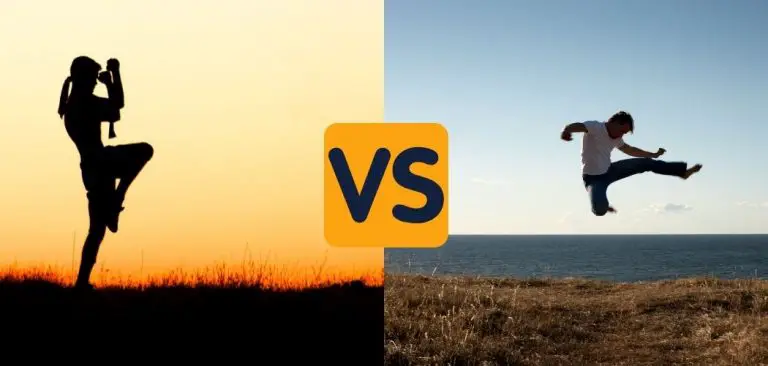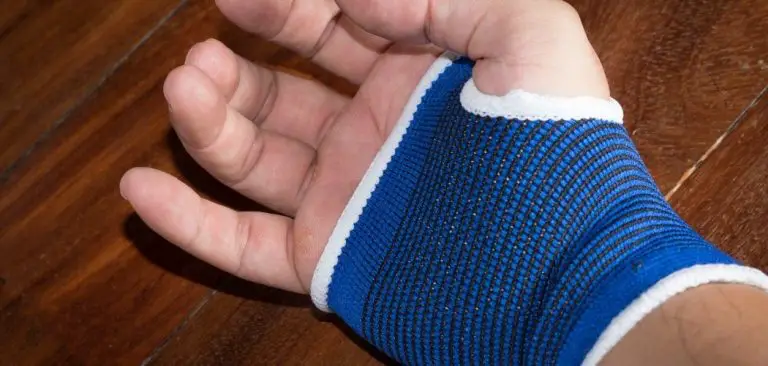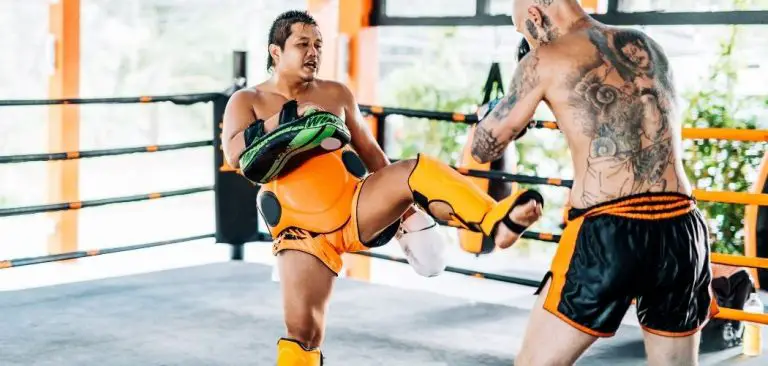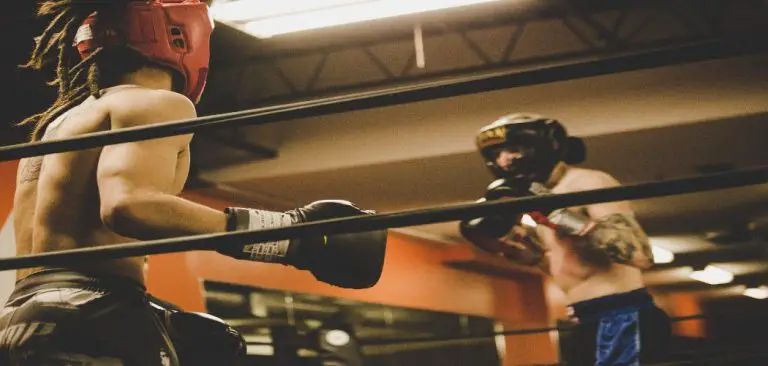Muay Thai is a truly brutal martial art. Combatants utilize their fists, elbows, knees, and shins to slice and bludgeon one another until only one’s left standing, and the fighters are among the best combat athletes in the world. As with all martial arts, technique plays a critical role in a Muay Thai fighter’s success in the ring, but technique and timing will only take an athlete so far. In the world of full-contact fighting, another element comes into play: raw power.
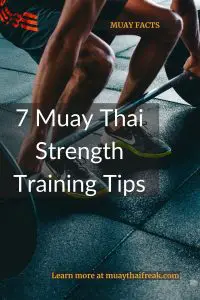
Muay Thai strength training is similar to training for other martial disciplines in that total body fitness is crucial to victory, but a fighter needs more than just an impressive bench press to dominate their opponents. Combatants need to be strong to control their opponents in the clinch yet still have the endurance to fight all five rounds if need be.
Fighters need balance and flexibility to attack anywhere on their opponent’s body without straining themselves, and they need a strong core to generate torque and withstand body blows. There’re several ways to achieve this level of fitness, so let’s break it down and build ourselves up with Muay Thai strength training.
Table of Contents
Stretching and Warm-Up
Before taking part in any sort of physical activity, you’re gonna want to make sure your joints are limber and your muscles are ready for the task ahead.
Fighting takes a heavy enough toll on the body, so you don’t want to get hurt in training! You should do a light full-body stretch before every workout, regardless of what your specific workout of the day is going to target. Then you’re going to want to move on to dynamic stretching.
Dynamic stretching differs from the typical, stretch-and-hold static stretching and is much more beneficial to your Muay Thai strength training workout regime. Rather than a pushing or pulling force acting on a specific muscle, you’re going to be lengthening the muscles as you move them, similar to concepts found in yoga.
This way you’ll promote flexibility while pumping blood and oxygen to the muscle groups that’re going to need them most once you begin your exercise. Since we’re talking about Muay Thai, however, it’s best to stretch out everything! This 12-minute video contains excellent examples of dynamic stretches. By the end, you’ll be ready to train!
Explosive Power
A fighter needs to have the ability to launch an attack at the exact moment an opportunity presents itself, and this is where explosive power comes into play.
Free weights and kettlebells have their place in developing this power, but burpees are among the best Muay Thai strength training exercises you can do to develop the fast-twitch muscle fibers required for these attacks. And the best part is you don’t even need equipment!
This makes burpees a great option for the seasoned pro locked out of the gym or the newbie just beginning their combat sports journey. An additional benefit of burpees is how much stress they put on your cardiovascular system. As mentioned in the intro, a fighter needs cardio to survive a fight’s later rounds.
If you happen to have access to free weights, you can build explosive power through compound lifts which we’ll cover later in this article, but for now, just remember that a compound lift is any exercise that utilizes multiple muscle groups to move the weight.
But be it a bodyweight exercise or free-weights, remember that proper form is key. Muay Thai strength training can go disastrously wrong if you hurt yourself and end up sidelined with an injury!
Watch this video if you’re not sure how to do a burpee, and make sure you do it right! It’s better to take your time learning than it is to lose time recovering from injury.
Core
A solid eight pack does more than just turn heads at the beach; it means your core is strong and ready to dish-out and withstand punishment in equal measure! Your core is engaged more often than not; it keeps you upright as you sit, stand, and go about your day to day life. That being said, you have to hit your core hard and often in order to stimulate muscle growth.
Your core is comprised of four muscle groups. The most easily seen and defined are the six-pack muscles, the rectus abdominus. Cultivation of this muscle group not only protects your vital organs from head-on attacks but adds serious power to front kicks.
The transverse abdominus runs from the side of your navel down towards your groin, which not only gives you the ‘v-cut’ gym rats covet but gives your knee strikes and roundhouse kicks a little extra oomph. Running alongside your abs are the obliques. The obliques run over your ribs and developing them adds torque to your round kicks and hooks, in addition to providing protection to your chest cavity.
The ribs and core are prime targets for punches, knees, and kicks, so it’s important to think of the front core muscles as a shield against attacks. The stronger the shield, the more protected you are. In addition to your eight pack and ribs, there’s the often-neglected multifidus and erector spinae muscles of your lower back. Failing to develop these in conjunction with your abs can lead to muscle imbalance and serious injury, for as the front grows stronger it grows taut, which places stress on your spine.
It should go without saying how important your spine is not only to fighting but to overall health. A weak spine means a weak person, and weak people never make good fighters. Emphasis on core work is absolutely imperative for your Muay Thai strength training, and since your core gets worked every moment you’re not laying flat you should work it every day. This doesn’t mean go to failure every day, but you’ll want to at least feel the burn!
Perform core training at the end of each day’s training; you don’t want to weaken these muscles with targeted exercises before they’re utilized throughout the rest of the workout! This chart is full of core exercises you can perform at home or at the gym.
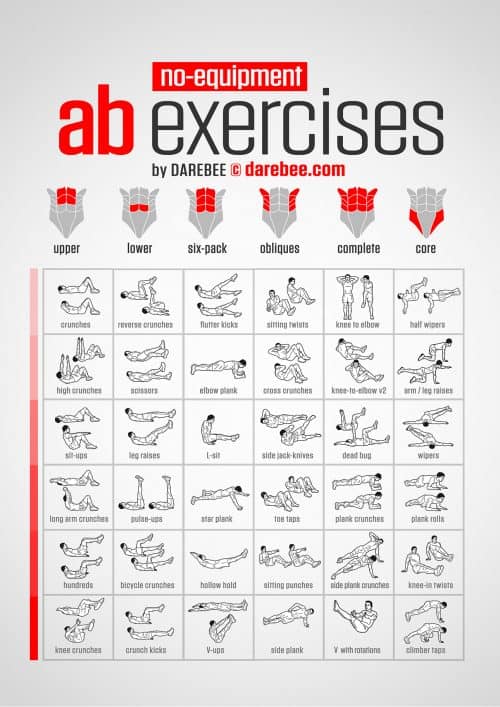
Lower Body
Saying you need strong legs to be a good kickboxer is a bit of a no-brainer. Every kick in utilizes every muscle in the leg to one extent or another, so your Muay Thai strength training needs to target all of them.
This is where those compound movements I mentioned earlier come in. There are plenty of body-weight exercises you can do to develop your leg muscles; air squats, step-ups, lunges, etc. While calisthenics certainly have their place and are an excellent tool for building muscular endurance, adding weight is going to tear down those muscle fibers much faster and lead to greater boosts in strength in a shorter period of time.

The undisputed king of leg exercises is the squat. This is a powerful movement and should have one of the highest numbers of all your lifts; if you can bench more than you can squat you absolutely need to stop skipping leg day! Fighting takes a lot out of a person, and you’re going to want a set of tree trunks under you when exhaustion starts to set in.
The best fighters are the most complete fighters, so you’re going to want a good combination of power, endurance, and balance. Keep that in mind when planning your Muay Thai strength training regime!
Try heavyweight and low-reps for major lifts like squats to build strength and power, go for time rather than reps with bodyweight exercises like step-ups, and hold on to a single dumbbell when doing lunges to engage your core and promote balance when doing lunges (just make sure you alternate the hand holding the weight every set!).
Just because the website is Men’s Health doesn’t mean women can’t find the workouts useful! Remember to use proper form and get creative; people often forget the ‘art’ portion of ‘martial arts!’
Upper Body
A strong chest adds power to your punches, while a strong back helps you pull your opponent close so you can rag-doll them in the clinch or pull them into your knee strikes! Your back is the second largest muscle group in your body, just after your legs.
As mentioned before, you’ll use these muscles to hold onto and control your opponent, so don’t neglect to train them! Due to the wide range of motion in your shoulders, the number of ways you can pull the weight towards your body is vast and you’ll want to train those muscles from every possible angle.
Not only will this give you more power in the ring, but you’ll build strength and stability in your shoulders. Various rows and rowing exercises will add thickness to your back and torso while pulling the weight down (or pulling yourself up, like in a pull-up or chin-up) adds width by targeting your latissimus dorsi, which also add incredible power to your punches (check this “Bruce Lee lat spread;” the man had a set of wings on him!).
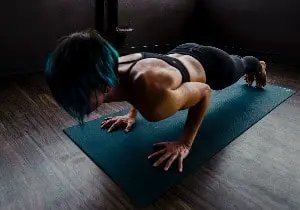
When performing rows or any shoulder-intensive exercise, opt for dumbbells over straight bars whenever possible to build joint stability. Not only will this make you stronger in the long run but it’s a great way to prevent injury!
Hold the weight at the peak of each rep for a solid two or three count and slowly lower to the finish. This’ll build endurance and replicate pulling an opponent in the clinch.
Next is the chest, or the pectoralis muscles. As with your back, make sure you train your pecs from a multitude of angles by adjusting the angle on your bench or by elevating your feet while doing pushups.
If you can, once against choose dumbbells for your chest exercises, the king of which is every gym rats favorite lift, the bench press. To build power, push the weights away from your body as fast as you can in a controlled manner; make sure you choose a weight that’s challenging after 10-12 reps but one you can control.
Hyper-extending your elbows isn’t good, especially when we’re talking about Muay Thai strength training! Hold the weight at the top for a moment, then slowly lower the weight to complete the rep. Go deep enough to feel a stretch in your pecs but not so deep you lose strength.
This’ll enhance your flexibility while simultaneously tearing down the muscle fibers and thus building strength. There are many, many more exercises you can perform to enhance your upper body conditioning and improve over-all Muay Thai strength training. Click here for more ideas!
The Cool Down
The workout’s not over yet! The cool down is as important for Muay Thai strength training as the workout itself, so now’s the time for static stretching. This is when you do the stretch-and-hold stuff you learned in gym class, and it’s vital to do it while the muscles are warm.
Take your time with this; an effective static hold should last anywhere from 30-60 seconds. Regardless of the workout’s targeted muscle group, stretch everything to gain total joint flexibility and balance, both of which are necessary for speed.
The Wrap Up
I know starting a strength routine is daunting, but we’ve all gotta start somewhere. And even if you’re a seasoned gym rat, there’ll be days your brain tries to talk yourself out of going to the gym. It’s important to remember that martial arts and strength training for Muay Thai is ultimately on the individual to find success, which means our first and most constant opponent will always be ourselves.
Listen to your body, not your mind. If your body is telling you to take a rest, take a rest. If your mind is telling you to, it’s just laziness in disguise. Fighters need to pursue strength training as readily as they do training their techniques. Always remember: a good fighter is a complete fighter!
Last Updated on May 21, 2022 by Deni
